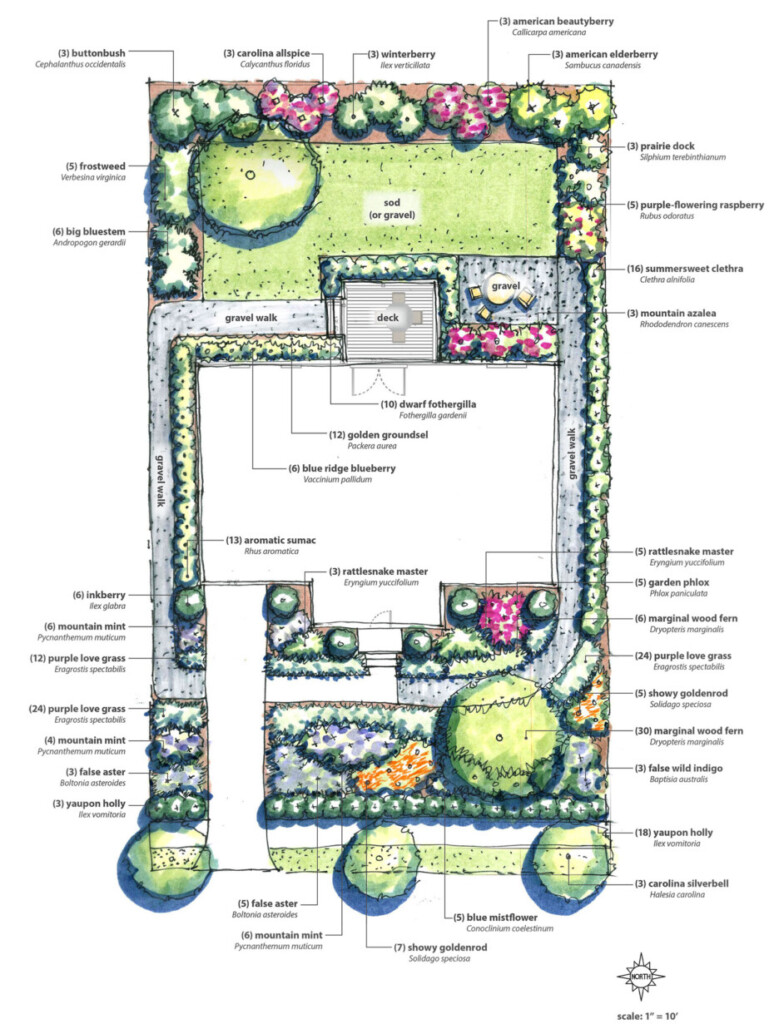
Printing note: This design was created to be 8.5″ x 14″ and the design pdf will print best on legal size paper.
Site Analysis
Wait to do anything big until you’ve had a chance to observe your garden for a few months – ideally a year. Walk it and watch out your windows to see how the light shifts over the seasons. You’ll also be able to identify any nearby eyesores or views you want to frame. Keep an eye out for down-spouts and any areas where water pools.
Work with your local extension agency to get a soil test. That’ll let you know if your soil is generally acid or limey. In Chattanooga, undisturbed soils are usually acidic – while disturbed urban soils tend to be more basic. The ph (level of acid or base) will affect which plant species thrive in your garden. The species shown in this plan tend to prefer slightly more acidic soils, typical of the Chattanooga area, but will still grow in somewhat basic conditions. In the Chattanooga area, pine needles or composted leaf mulch are the best mulches – slowly breaking down into the soil. You can also use a crushed gravel mulch, but be aware that limestone-derived gravels can make the soil more basic.
Phasing
Start with larger investment projects that will have a big impact. Plant trees and shrubs to get them growing and established. The hedgerow along the back property lines and street trees/hedge out front are an excellent place to get started. They’ll also be easy to maintain and get established. A second phase would be to add the shrubs along the foundations, as well as the gravel terrace and paths wrapping the house. Finally, get rid of that front lawn and let the perennials go free!
Plant List
This list is inclusive of only the native plants in this specific native garden design. The list is meant to provide a basic preview of the beautiful and diverse plants featured in this design and serve as a reference tool when selecting plants at a nursery. (The list can be printed in two columns using landscape mode in your print settings.) More thorough information about each of these native plants can be found online at the Audubon, Lady Bird Johnson Wildflower Center and United States Department of Agriculture websites, all of which provide a wealth of native plant information including comprehensive North American native plant databases.
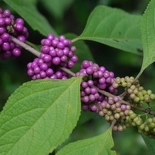
American Beautyberry(Callicarpa americana)
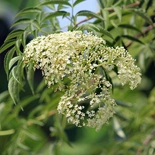
American Elderberry(Sambucus canadensis)

Big Bluestem Grass(Andropogon gerardii)
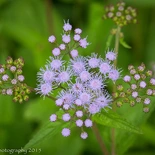
Blue Mistflower(Conoclinium coelestinum)
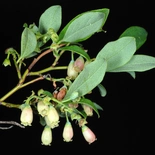
Blue Ridge Blueberry(Vaccinium pallidum)
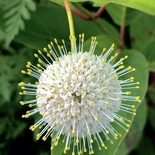
Buttonbush(Cephalanthus occidentalis)
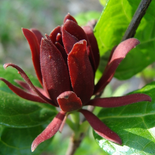
Carolina Allspice(Calycanthus floridus)
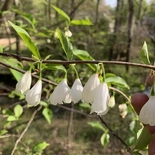
Carolina Silverbell(Halesia carolina)
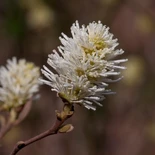
Dwarf Fothergilla(Fothergilla gardenii)
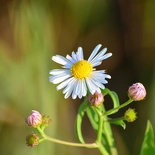
False Aster(Boltonia asteroides)

False Wild Indigo(Baptisia australis)

Fragrant Sumac(Rhus aromatica)

Frostweed(Verbesina virginica)
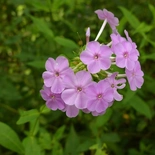
Garden Phlox(Phlox paniculata)

Golden Groundsel(Packera aurea)
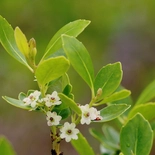
Inkberry(Ilex glabra)
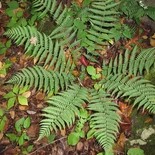
Marginal Wood Fern(Dryopteris marginalis)
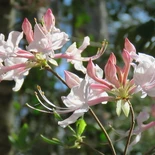
Mountain Azalea(Rhododendron canescen)

Mountain Mint(Pycnanthemum virginianum)
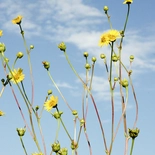
Prairie Dock(Silphium terebinthinaceum)
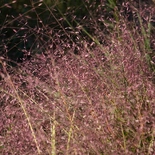
Purple Lovegrass(Eragrostis spectabilis)
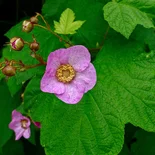
Purple-flowering Raspberry(Rubus odoratus)
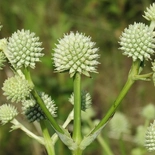
Rattlesnake Master(Eryngium yuccifolium)
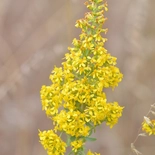
Showy Goldenrod(Solidago speciosa)
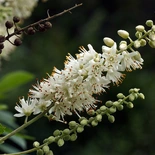
Summersweet clethra(Clethra alnifolia)

Winterberry(Ilex verticillata)
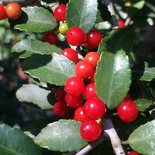
Yaupon Holly(Ilex vomitoria)
About the Designer

Caleb Melchior is a landscape architect and planting designer based in the southeastern United States. He’s currently working with Coastal Vista Design on Sanibel Island in southwest Florida. Caleb has a Masters of Landscape Architecture from Kansas State University, along with extensive experience designing fine gardens and country estates. His work is frequently published in national gardening and design publications, including Land8, Horticulture and The American Gardener. You can follow Caleb on his blog (calebmelchior.com/journal) or on Instagram @the_curious_gardener.
Caleb Melchior creates gardens rooted in a deep knowledge of regional plant communities and ecosystems. His goal is to design planting that’s delightful and surprising, but thrives within the constraints of the site. He aims to provoke a deeper appreciation and enjoyment of the natural world.
Free National Webinar: "Intergenerational Care for Land and Community: A Conversation with Robin Wall Kimmerer and Esther Bonney"
January 21st at 6:00 PM (CT)
In this special collaboration, Robin Wall Kimmerer, author, botanist, and founder of Plant Baby Plant, joins youth leader and Nurture Natives founder Esther Bonney for an intergenerational conversation about belonging, reciprocity, and native plant action.
About Wild Ones
Wild Ones (a 501(c)(3) nonprofit organization) is a knowledgeable, hands-on, and supportive community focused on native plants and the ecosystem that depends on them. We provide resources and online learning opportunities with respected experts like Wild Ones Honorary Directors Doug Tallamy, Neil Diboll, and Larry Weaner, publishing an award-winning journal, and awarding Lorrie Otto Seeds for Education Program grants to engage youth in caring for native gardens.
Wild Ones depends on membership dues, donations and gifts from individuals like you to carry out our mission of connecting people and native plants for a healthy planet.
Looking for more native gardening inspiration? Take a peek at what our members are growing!

